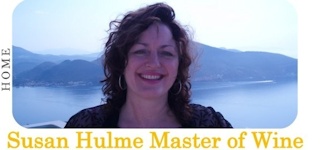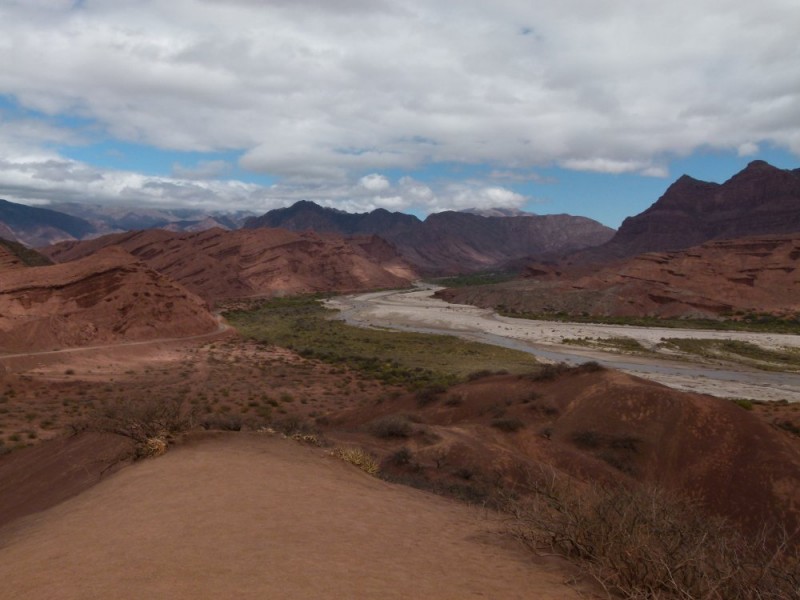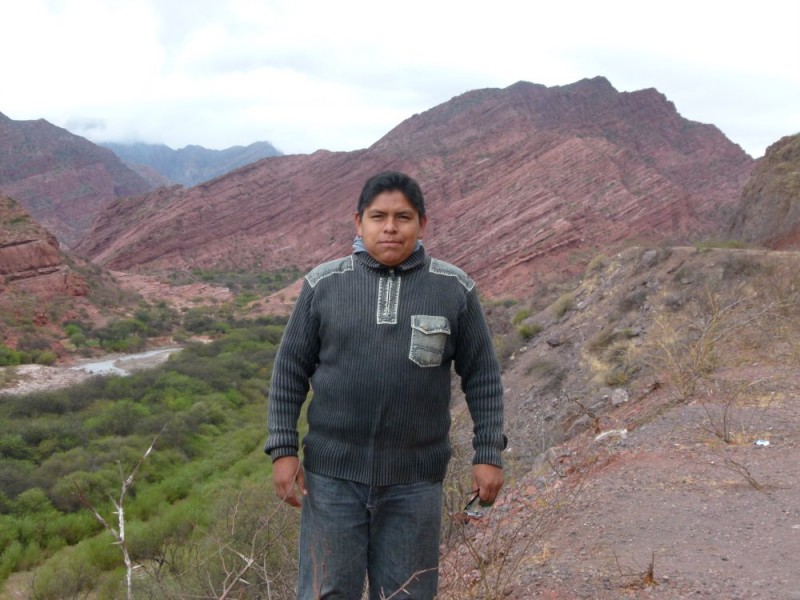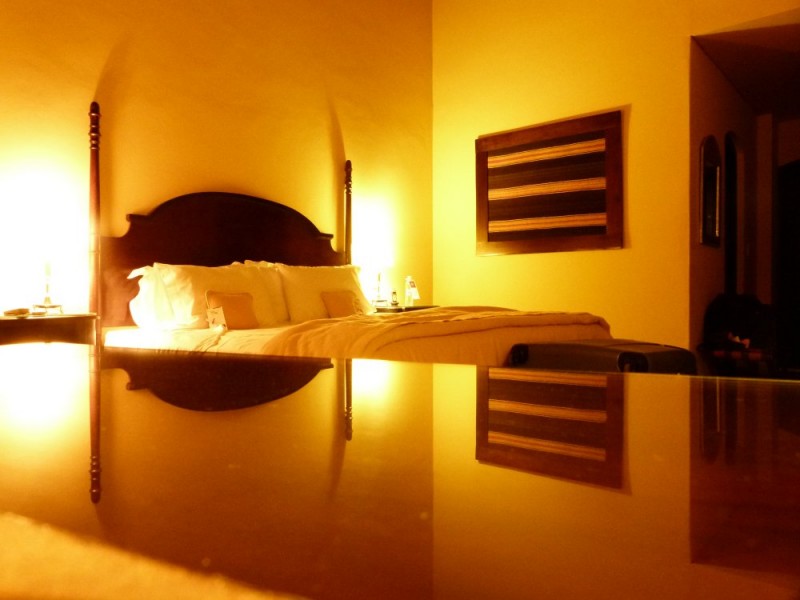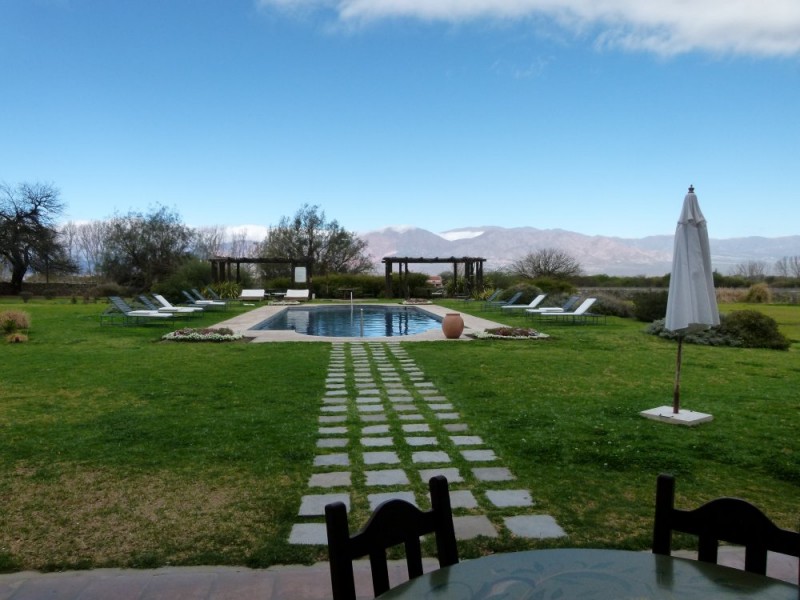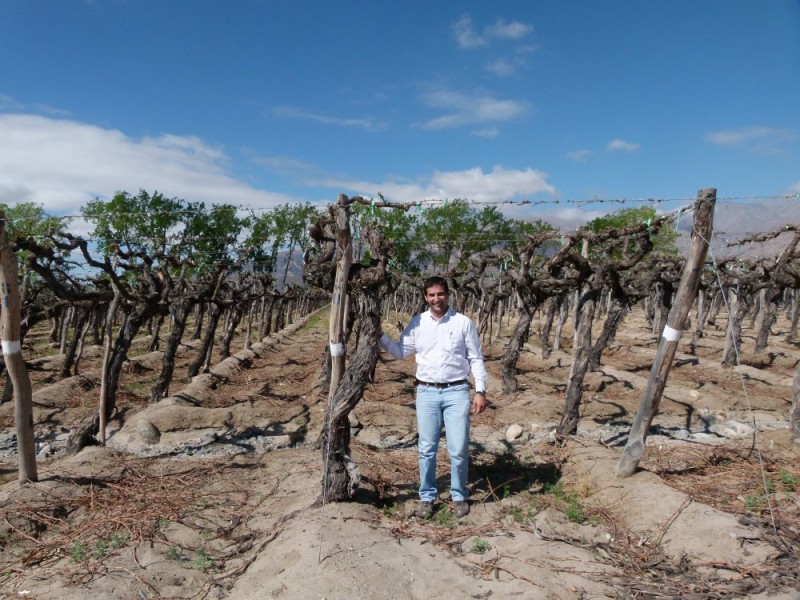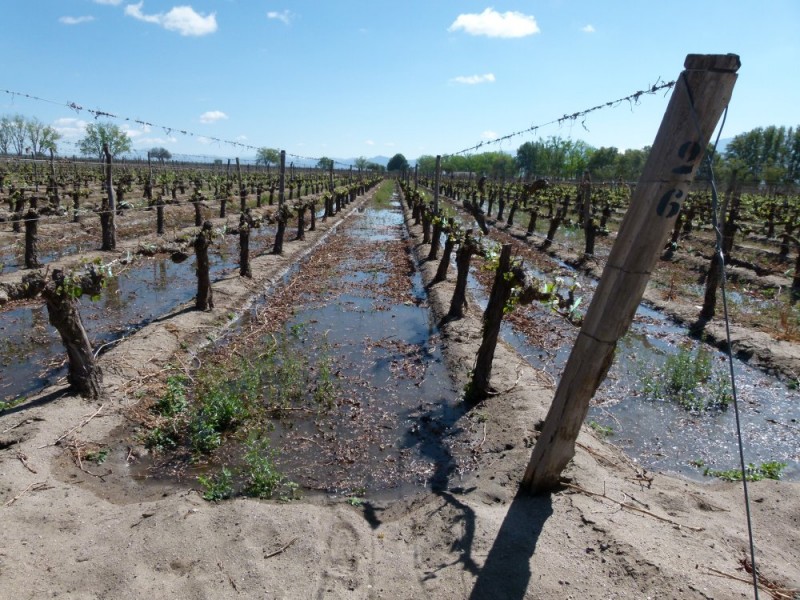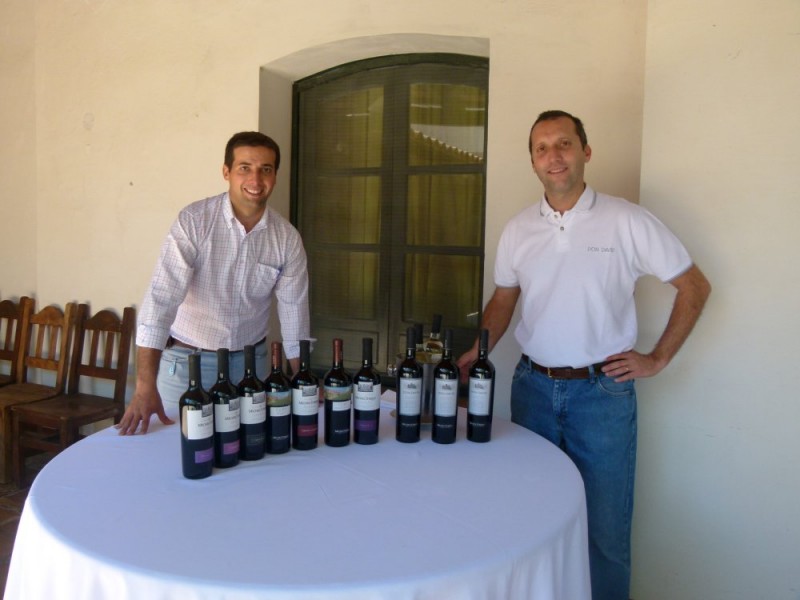In September I was invited to be an international judge in the prestigious bi-annual Vinandino wine competition held in San Juan and Mendoza in Argentina. After the competition finished I was determined to see something more of Argentina on this my second visit to the country. This time I added a couple of days in the exciting capital Buenos Aires and a few more days visiting a magical place I had longed to see for some time, Cafayate, the beautiful area in the far north west of Argentina towards the border with Chile and Bolivia. Cafayate is the home of Argentina’s native aromatic grape variety, Torrontes and it is one of those places that has always held a special draw for me. It more than lived up to my expectations with its brilliant bluebird-blue skies, almost blindingly bright sunlight and its dramatic canyons.
Getting there
I had been invited as a guest of Michel Torino Winery to visit their Bodega El Esteco and stay in their delightful boutique hotel and spa. The distances in South America take some getting used to as having flown the two hours or so from Buenos Aires to Salta, itself a well-known tourist attraction, it was then another three-hour drive to Cafayate. My considerate host, Michel Torino, had sent a driver, Luis to collect me. In case you are thinking of visiting they do this for their hotel guests too.
Once inside the car there was an overpowering and not entirely pleasant smell that turned out to be the handfuls of dry leaves that Luis was munching. They looked a bit like bay leaves.
“What’s that”, I asked. “Coca” he replied. “all the drivers use it, it helps to keep you awake and alert. Try one”. I tried one leaf and promptly fell asleep!
I woke up by the time we had exchanged the gentle rural surroundings for the more rugged canyon scenery. In places it was reminiscent of Bryce Canyon, with its red, sculptural rock formations and Death Valley, with its uncompromising landscape.
We finally arrived at the pretty, white colonial building of El Esteco – a little oasis in a beautiful valley, surrounded by two dramatic mountain ranges. There was a lovely feeling of calm and the heady scent of orange blossom filled the air, wafted from the beautiful series of courtyards and gardens that make up the grounds of the hotel.
El Esteco is a lovely place to stay. It is extremely peaceful and each courtyard has its own character – one filled with orange-blossom trees (then in full bloom), another with flowering white oleander trees and another with a well as a centrepiece. Rooms are large and high-ceilinged with dark wood furnishings, yellow ochre walls and traditional decorations such as locally-designed woven rugs on the walls.
I had arrived on a Sunday, the winemaking team’s day off, so I was invited to enjoy complimentary spa treatments at their shiny new hotel spa where they use purified local clay and minerals in their treatments. My massage and facial were just perfect after a week of judging wines! I was in my element. The breathtaking beauty of the setting, the tasteful comfort of the hotel, together with the feeling of peace and the wonderful, heady, scent of orange blossom, made the whole thing a magical and unforgettable experience.
Location, location!
The next day I met viticulturist Francisco Xavier Tellechea, the vineyard manager, who showed me around. After finishing his studies inMendozain 2006, he had spent 6 months working in theLanguedoc. In 2009 he moved toPerufor 1½years where he made both wine and Pisco.
Cafayate’s location between two rivers explains its name – it means ‘box of water’ in Cacán (the Calchaquí language). Since then I have heard two other possible translations for the name Cafayate, but ‘box of water’ is both poetic and accurate as Cafayate is supplied by two rivers – the Chuscha, which originates in the Andes and provides water for most of the year, and the Loro Huasi which supplies the nearby Transito, Torino’s organic estate. Cafayate looks very dramatic, as it is surrounded by two mountain ranges, the Calchaqui to the West and Aconguicha to the East. The Calchaqui Mountains, it is said, hold back the clouds so the Calchaqui Valley is very dry with only 180-200 mm of rainfall per annum, a contrast to the very wet Lerma Valley. Here though, a soft north wind helps to dry the vines and prevent problems with rot.
The area is also affected by the Zonda, a wind that originates in Chile but takes its name from a village near San Juan in Argentina. As it climbs the Andes it releases its moisture and as it flows down the other side it becomes warmer and drier. This is a wind not to be trifled with; in Mendoza, towards the end of Vinandino, it had threatened to confine us to our hotel and cancel our scheduled chocolate and wine tasting and possibly even our flights home. Fortunately that didn’t happen.
Francisco explained that Cafayate has one of the best climates in Argentina. It is very consistent from year to year with no frost, hail or storms. It is a fresh climate with a temperature that drops dramatically at night and is one of the sunniest places in Argentina with 320 days of sunlight a year. In summertime there is rain but no more than 200 mm a year. If it rains one day, that same day generally has sun and wind to help dry out the vines thereby helping to reduce vine disease. In winter the average temperature goes down to 6oC during the day.
The Torino Cafayate vineyards are located at the bottom of the mountains at an altitude of between 1700 and 2000 metres. This gives a big diurnal difference in temperature – the daytime temperature in the growing season is between 28 – 34oC but at night it drops to 14oC.
I asked Francisco why cool nights are so important for the vine and he replied that the plant can breathe more deeply when it is cooler, and as it inhales more deeply it develops more aromatics and aromatic precursors.
They have 480 ha of vines here and two key varieties are of course the speciality of the region, Torrontes and Cabernet Sauvignon. These are both late-ripening varieties.
Viticulture – in defence of pergola training
The low rainfall means irrigation is essential and at Cafayate they operate two irrigation systems, flood and drip (introduced in 1997 and used for all subsequent plantings, including 80 ha of new vineyards last December). The irrigation water comes from the two aforementioned rivers, the Chuscha and the Loro Huasi.
As far as vine training is concerned they have had VSP (vertical shoot positioning) since 1982 but they also have the more traditional pergola system for some vineyards, and for some of the best ones too!
The belief that the traditional pergola system is generally inferior to other systems in terms of the quality of fruit it produces appears not to be true, at least when it comes to a vigorous variety like Viognier.
With VSP, their yield is 10-12,000 kg per ha, but with the pergola system, not only is the yield much greater at 20,000 kg per ha but the quality is much higher.
Francisco explained that with VSP, Viognier enters a vicious circle which is difficult to break once established – vigour increases while quality decreases.
This is a good counter-argument example for the MW essay question, ‘Low yield equals quality’!
Torrontes
The indigenous Torrontes is now proven to be a hybrid between Criolla and Muscat of Alexandria. There are three Torrontes clones in Argentina but only one predominates – Torrontes Riojano – which is the most popular clone in all districts of Argentina. Its parents are Criolla Chica (Mission in USA), and Muscat of Alexandria. This clone is highly aromatic and complex with nuances that the other two clones do not have.
Actually Criolla Chica may not be a “clone” of what we know as Mission but may be a mutation of Black Muscat. If this is true, then both parents of Torrontes are Muscat varieties! Perhaps Jancis Robinson and her team will have got to the bottom of this in their forthcoming updated edition of ‘Vines, Grapes and Wines’.
Torrontes San Juanino is planted in the San Juan district. It shares its parentage with Riojano but the flavours are like a very straightforward Muscat without any tropical fruit or banana/apricot nuances. It is very simple although viticulturally it is similar to Riojano.
Torrontes Mendocino is from Mendoza. This clone is the least preferred of the three because the flavours are more neutral – hardly anyone plants it anymore. Only one parent is known: Muscat of Alexandria so if this is the case, then this “clone” is not really a clone at all but a separate variety.
Randle Johnson, consultant winemaker at Columé, believes that the cooler climate of Cafayate and the Calchaqui Valley in general magnifies the Muscat aromas of Torrontes. The compounds which cause these aromas (called turpenes) are also present in, amongst others, Viognier, Riesling, and Gewurztraminer all of which excel in cool climates. He says the grapes for the best Argentinean Torrontes brands are almost all sourced from Cafayate, making them much in demand and more expensive.
I asked Francisco, as Michel Torino is one of the biggest producers of Torrentes, how to get the best out of the variety. He said the balance between canopy and production must be right and they need to remove leaves to allow air to circulate. In addition, Torrentes needs to ripen fully and must be harvested quickly in the cold early morning so to preserve the delicate aromatics; the berries should be transported in small boxes to avoid damaging them and the winery should be nearby.
Harvest commences in February and finishes in April. They have a lot of Torrontes to harvest which makes them one of the world experts in this variety. Apart from their own vineyards they also buy in grapes from between 15 -20 growers which accounts for 10-15% of their production. The growers are carefully monitored and advised on viticultural matters and the final destination of these grapes depends rightly on the quality of the fruit.
I asked Francesco if he had a favourite grape variety he likes to work with. He prefers Merlot because it is very adaptable and in the middle in terms of a flavour profile. But Merlot is not so popular in Argentina – if people want soft fruity wines they go for Malbec, whereas if they want something more tannic they choose Cabernet Sauvignon or Tannat. He also likes Syrah for the opposite reasons – it’s a challenge and very difficult to prevent the berries from shrivelling no matter what you do to the canopy.
Pests and problems in the vineyard
Although they use Bordeaux mix and sulphur against mildew, they don’t have too many problems or pests because it is so dry here. However while I was there in October (Spring in Argentina) they were spraying ant nests. They have problems with both black and red ants who regard the leaves and buds of the vine in Spring as one giant salad bowl and can eat their way through a big part of a vineyard, if left unchecked, over a weekend. The black ants tend to congregate in one place whereas the red ants are spread sporadically throughout the vineyard so are more difficult to control.
We finished our vineyard tour in the aptly named La Vieja (the Old One), planted in 1947 with Torrontes, where we met winemaker Alejandro Pepa. Alejandro had prepared an excellent tasting in one of the picturesque hotel courtyards. The tasting covered most of the Michel Torino range and included a very attractive rosé and an interesting Tannat in the Don David range as well as three very good Torrontes. The top end wines were tasted before dinner that same evening.
Some of the wines that stood out and were the most exciting, were the Ciclos Fumé 2011 Sauvignon Blanc, Don David Primavera vineyard Torrontes 2010, Don David Mercedes vineyard Chardonnay 2010, Don David La Maravilla Malbec 2010 and Altimus 2008. The latter is an intriguing blend of Malbec 52% Cabernet Sauvignon 34% Syrah 8% and 6% Bonarda.
Huge thanks to Inma, Javier, Marcello, Francisco & Alejandro and all of the the team at Michel Torino for an excellent visit and a very memorable stay. Also many thanks to Randle Johnson for his advice and Gloria Peña and the team at Columé for their hospitality.
© 2011 – 2012, Susan Hulme MW. All rights reserved.
